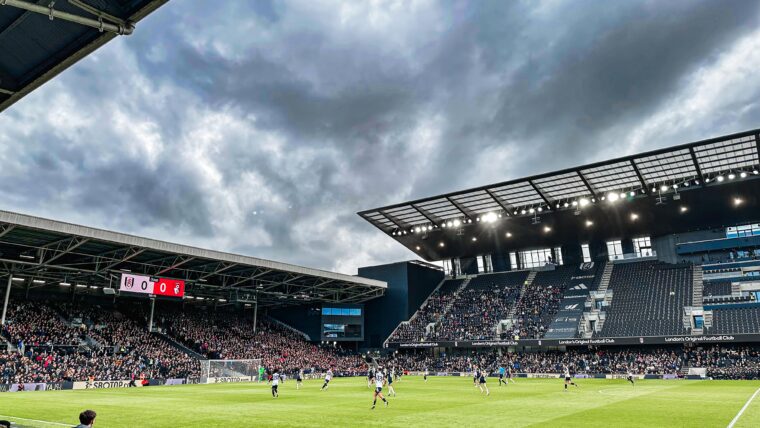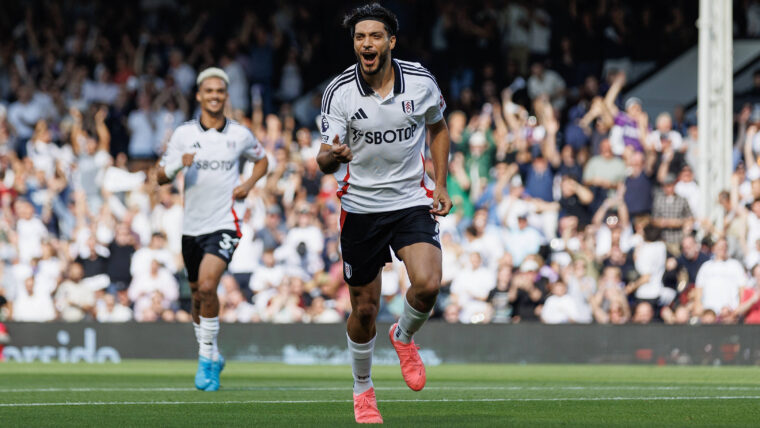Back to Basics: How Parker can get more from his squad
Written by Eamon Levin on 18th November 2019

Our recent win at St. Andrews strengthened Scott Parker’s standing with fans, but should be getting more from this squad. Eamon Levin looks at how he can.
Many expected this run of five games since the last international break, all against lower-table teams, to be a springboard from which the Whites could start living up to their billing as an offensive juggernaut. However, poor performances and questionable tactics have led to underwhelming performances, including the win at Birmingham.
Parker often speaks about the value of effort and desire. The manager said after the Birmingham win: “In the lead up, the main focus I wanted to see was character. That’s how I determine a footballer, that character and passion about them. If you’ve got that first and foremost, you’ll be alright.” But we don’t want to be alright, we want to be excellent – we want to be one of the top two.
Parker’s belief in passion is admirable, but passion alone won’t lead to promotion. In order to find success, teams need to be good tactically, play with a system that fits their player’s strengths, and – most of all – consistently execute fundamentals at a high level.
To be blunt, we’ve not been nearly good enough when it comes to football’s basics. We don’t play with width, our fullbacks rarely go forward, and the players’ defensive positioning, especially against counter attacks, is often poor. Parker can make us more effective by making a few changes.
Which side are you on?
The greatest threat to our promotion bid is Cavaleiro and Knockaert playing as inverted wingers. Operating on their unnatural sides encourages the two to move the ball centrally onto their dominant foot. So much focus in the centre of the pitch, however, inadvertently makes things easier for the opposing defense. The pitch gets congested, leading to the frustrated widemen letting fly from distance. Each 20-yard shot is another ball for which opposing defenders don’t have to fight our physically dominant Serb. We need to take better advantage of our big number nine; he’s an absolute menace in the box. Shoot less, feed him more.
Creating and utilising width is a concept that all players are taught from a young age, but this team seems to have thrown the idea out the window. If Parker is going to implore his wingers to come inside, he needs another way of taking advantage of the full width of the pitch. Opposing teams are clearly prepared for Cavaleiro and Knockaert to cut the ball back; defending fullbacks often cheat to the middle before the white’s wingers even step inside. If Cavaleiro and Knockaert even do beat their respective defenders, a block of players is waiting in the middle – it’s incredible easy to defend.
To combat this, our fullbacks need to make overlapping runs behind their respective wingers. This does two things: Firstly, it forces the defence to stay spread out to defend the entire width of the pitch creating more space to play in the middle of the park. Secondly, it forces the defending fullbacks to remain honest and not move inside, allowing our wingers to cut inside more easily if they do.
Proof’s in the pudding
Fulham’s solitary goal against Birmingham was a direct result of implementing these ideas: crossing the ball to Mitrovic from the byline and deploying overlapping fullbacks. Cyrus Christie, whilst having some defensive frailties, is a much more offensive fullback than Maxime Le Marchand. It wasn’t a coincidence that after Chrystie came on, the game opened up and Fulham’s attack became much more fluid and effective. In the build up to Fulham’s goal, Christie received the ball with space after overlapping Knockaert because the defending fullback had to stay inside to defend him. Christie is on his natural side, unlike Knockaert or Cavaliero, so he could provide an accurate cross with his dominant foot. Mitrovic did the rest.
Counting the cost of counter-attacks
We need to greatly shore up our defence against counter-attacks. Of 15 goals conceded from open play, including the lead up to conceding that late penalty to Stoke, six were the result of a poorly transitioning rearguard. Considering our possession-dominating style and commitment to pushing players forward, we should be near the top when it comes to defending counter-attacks. Allowing more than a third of our goals conceded to come in transition is unacceptable.
All three of Hull’s goals against us two weeks ago resulted from lousy defence against counter-attacks. In the build up to Hull’s opening goal, Mawson misses a tackle near half and Odoi, Johansen, and Decordova-Reid all retreat – but none recover to appropriate positions. All of them enter no man’s land: too far from the ball carrier to create pressure, but still nowhere near the Hull players running into the box. Upon recovering, retreating players need to immediately pick up any unmarked players – empty space has never scored a goal.
The same problem occurred when Hull secured their third and most laughable goal. After Bettinelli’s save, the ball ricochets off a Hull forward’s leg and trundles into the Fulham net. If only one of the three retreating Fulham defenders ran to the trailing Hull forward instead of hoping for Bettinelli to bail them out.
Parker’s right in that if we play with desire we’ll be all right – but our aim has to be higher than that. We need to start playing with width, put the ball in dangerous areas and defend effectively to our own strengths and weaknesses. So far we’ve not focused on these fundamentals enough, and we’re paying the price. Parker is only 16 games into his managerial career, so he’s got plenty of time to learn from his more and make the changes he needs to. If he does, we’ll all be celebrating come May.



